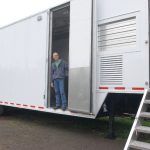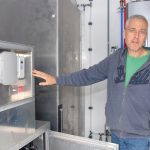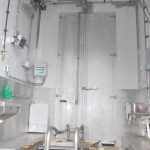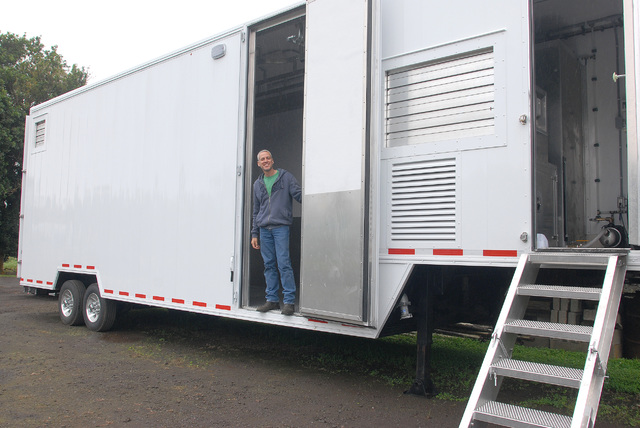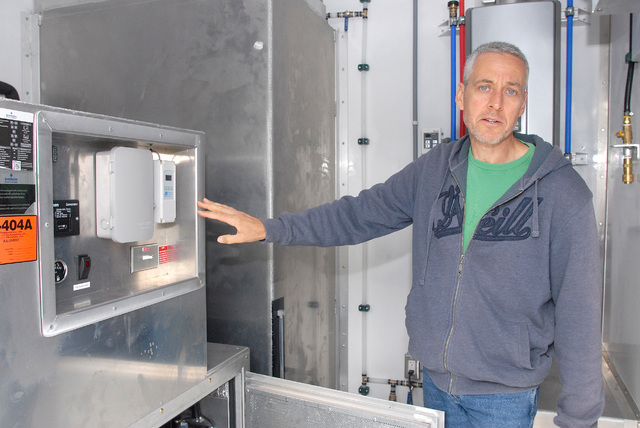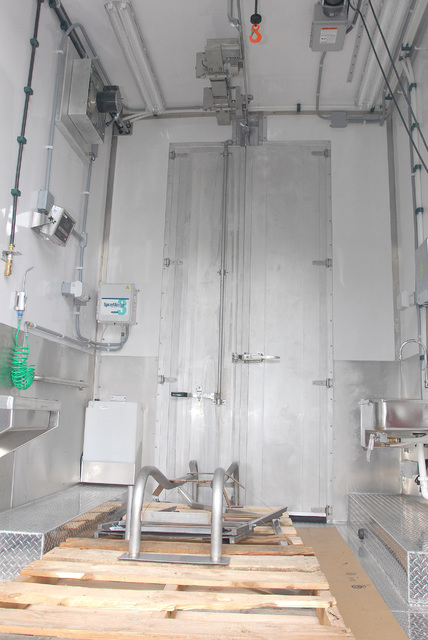WAIMEA — Not many decades ago, the Goliath sugar industry crashed on the Big Island, helping bring a fundamental shift to what residents consider sustainable. ADVERTISING WAIMEA — Not many decades ago, the Goliath sugar industry crashed on the Big
WAIMEA — Not many decades ago, the Goliath sugar industry crashed on the Big Island, helping bring a fundamental shift to what residents consider sustainable.
The loss of the cane industry pointed to the weaknesses inherent in big agriculture, but also highlighted new farming possibilities as swathes of land opened up. Small, diverse operations began to flourish — from orange and coffee orchards to tomato farms. Meat also began to be farmed in new ways.
While fruit and vegetable growers have found ready markets, a lack of inspected meat production facilities made the sale of small-scale, locally produced meat cuts almost impossible.
But that could all change now.
The day before Christmas Eve, Paauilo rancher Mike Amado swung open the doors on a shiny new mobile slaughterhouse being stored at a farm in Waimea. The unit, housed in a 36-foot trailer, is just about ready to roll. Equipped with electric winches and refrigeration, a generator, water supplies for two days and a stainless steel processing room, the unit has almost everything needed to bring the slaughterhouse to the herd — instead of the other way around.
Five years after island ranchers started talking about why the facility is needed so that meat can become part of the emerging diversified ag model, the Hawaii Island Meat Cooperative is in the process of hiring a general manager to run the mobile slaughter. In January, two head butchers and two assistant butchers will also be trained to operate the unit.
Initial production set to begin in April will be limited to USDA-inspected processing of animals into halves and quarters. Some hurdles remain before the unit can offer complete butchering, processing and packaging at three planned sites around the island.
For Amado, Kohala farmers Carol and David Fuertes — and a lot of others who support the endeavor — it’s about getting back to something that’s been lost.
The Fuertes family is working up a business plan so that the Hawi farm cooperative Palili O Kohala can be the site of one of the three satellite facilities for processing and packaging meats. The family raises cattle and hogs they would like to process and sell locally.
The Fuertes family would also like to open a retail facility where North Hawaii residents would have access to the very best of local beef, mutton, pork or poultry.
“Many locals hunt and fish, but we cannot buy meat unless it’s from the big stores, and that’s all imported,” said Carol Fuertes, who recalled old times when the Hawi and Kapaau area had two local butchers.
“We want to be able to bring that back,” she said.
The mobile slaughterhouse will be capable of processing eight to 10 head of cattle per day, 20 to 30 sheep or goats, and 15 to 20 hogs. The cost to the ranchers will be very similar to what they would pay if they took their animals to the island’s two inspected slaughterhouses in Paauilo and Hilo. That’s part of a pledge by the co-op that the unit will offer an alternative to existing facilities without trying to undercut them, Amado said.
The co-op is also working with Kona Raw Pet Food Co-op, which is interested in buying the non-edible products from the slaughterhouse. Amado says that’s just one example of how the endeavor can help the island get back to local food production and distribution rather than being prostrate to mainland corporations even bigger than big sugar.
“We’re trying to get back to that old model of local butcher shops,” said Amado. “We can take a business like this and knit it back into the community and get back to a more sustainable way of doing business.”
An initial $250,000 grant from the state Department of Agriculture served as seed money for the unit. Another $100,000 grant this year is helping equip and staff the trailer. An additional modular unit for cutting and wrapping meat will probably cost $200,000, Amado said. The co-op is continuing to seek state funds and would like to base the cut-and-wrap facility at the Natural Energy Laboratory of Hawaii Authority, a good place to publicly showcase the unit and get cheap electricity.
“The packaging component is critical,” Amado said.
That need is not lost on Board of Agriculture Chairman Scott Enright, who worked to bring initial funding for the slaughter unit and said the effort can look forward to more assistance from his office in the future.
“I will be helpful in the near term and will continue to assist with this pilot project,” Enright said.
The unit offers new opportunities to process a growing sector of specialty livestock that includes goats, sheep and rabbits, Enright said.
“There isn’t a lot of slaughterhouse space in the state,” he said. “(Small and specialty producers) aren’t going to be able to get any time in there.”
Amado said the co-op will be working to drum up its membership and overcome the skepticism that builds in when a project takes years to launch. The group now has about 20 members. While the slaughter unit and new co-op have generated a buzz, potential members have been a little slow in slapping down membership dues.
The co-op held two membership drives this fall in Kealakekua and Hilo, where it showed off the new unit. Some 200 people attended. Most of them raised animals for meat in some capacity, or wanted to.
“Now we just have to turn them into co-op members,” Amado said. “That is what is going to convince the Dept. of Ag that we have our finger on the pulse of something that is really working and has a lot of public support.”
Info: www.hawaiiislandmeat.com
